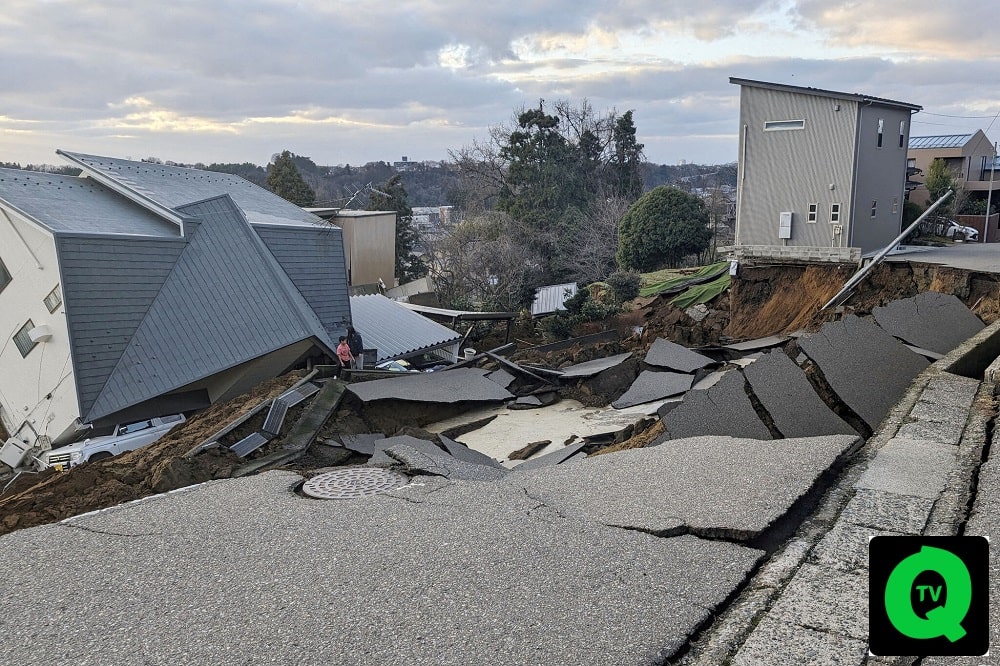In the aftermath of a potent earthquake, thousands of individuals in Japan find themselves seeking refuge in evacuation centers. The Kyodo news agency reports at least two fatalities, with concerns that the toll may escalate in the coming days.
The earthquake, registering at a magnitude of 7.6, struck at approximately 16:10 local time (07:10 GMT) on Monday, causing numerous buildings to collapse in various towns. The wreckage has trapped an unknown number of people beneath the rubble.
Tsunami warnings were initially issued but were later downgraded. Following the primary quake, approximately 60 aftershocks have been recorded. The affected areas include several towns where structures have crumbled, creating a dire situation for those caught in the debris.

Baldwin Chia, a snowboarder on vacation in Japan’s Hakuba Alps, recounted the experience of his hotel room shaking. While expressing concerns about potential avalanches, Chia stated that no reports of such incidents had been received.
Briton Andy Clark, present in the coastal city of Toyama during the quake, described a “scary afternoon and evening.” He recounted grabbing the sea wall for support and eventually seeking refuge on a school roof. Clark expressed difficulty in getting sleep due to persistent aftershocks.
Jeffrey Hall, a lecturer at Kanda University, felt tremors for about two minutes in Yokohama, on the other side of Japan’s main island, describing the quake as “very, very serious.”
The true extent of the damage remains unclear, but major infrastructure damage is apparent. In Suzu City, Ishikawa prefecture, several houses and power poles collapsed, according to NHK. Major highways near the quake’s epicenter were closed, leaving over 36,000 households without power, as reported by Hokuriku Electric Power.
The main expressway between Toyama and Kanazawa suffered significant damage from a landslide, as reported by former Japan correspondent Rupert Wingfield-Hayes. Additionally, Uchinada in Ishikawa prefecture witnessed rippled and cracked road surfaces, while the Onohiyoshi Shrine in Kanazawa sustained damage.
Initially, a major tsunami warning was issued for the Noto area in Ishikawa, but the waves that reached the Sea of Japan coastline were only around a meter high. The warning was downgraded to an advisory, with nearby Niigata and Toyama prefectures remaining on alert.
Japan, located in the seismically active Pacific Ring of Fire, boasts one of the world’s most sophisticated tsunami warning systems. Despite the presence of several nuclear power plants in the affected areas, Japan’s nuclear authority reassured that there is “no risk of radioactivity leaking.”
South Korea’s meteorological agency and Russia also issued tsunami warnings post the earthquake. The tragic 2011 earthquake in Japan resulted in a devastating tsunami, causing significant loss of life and triggering a nuclear meltdown at the Fukushima power plant.




